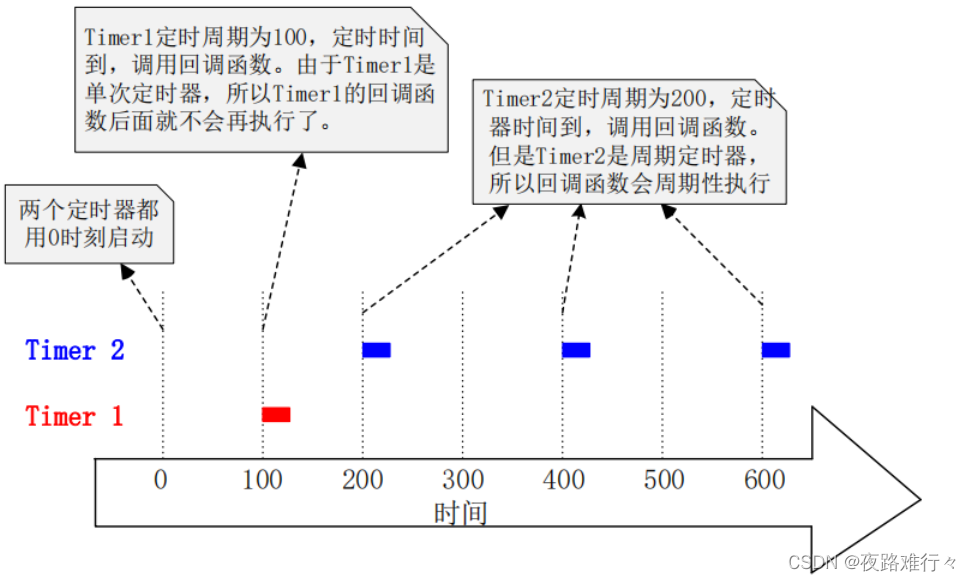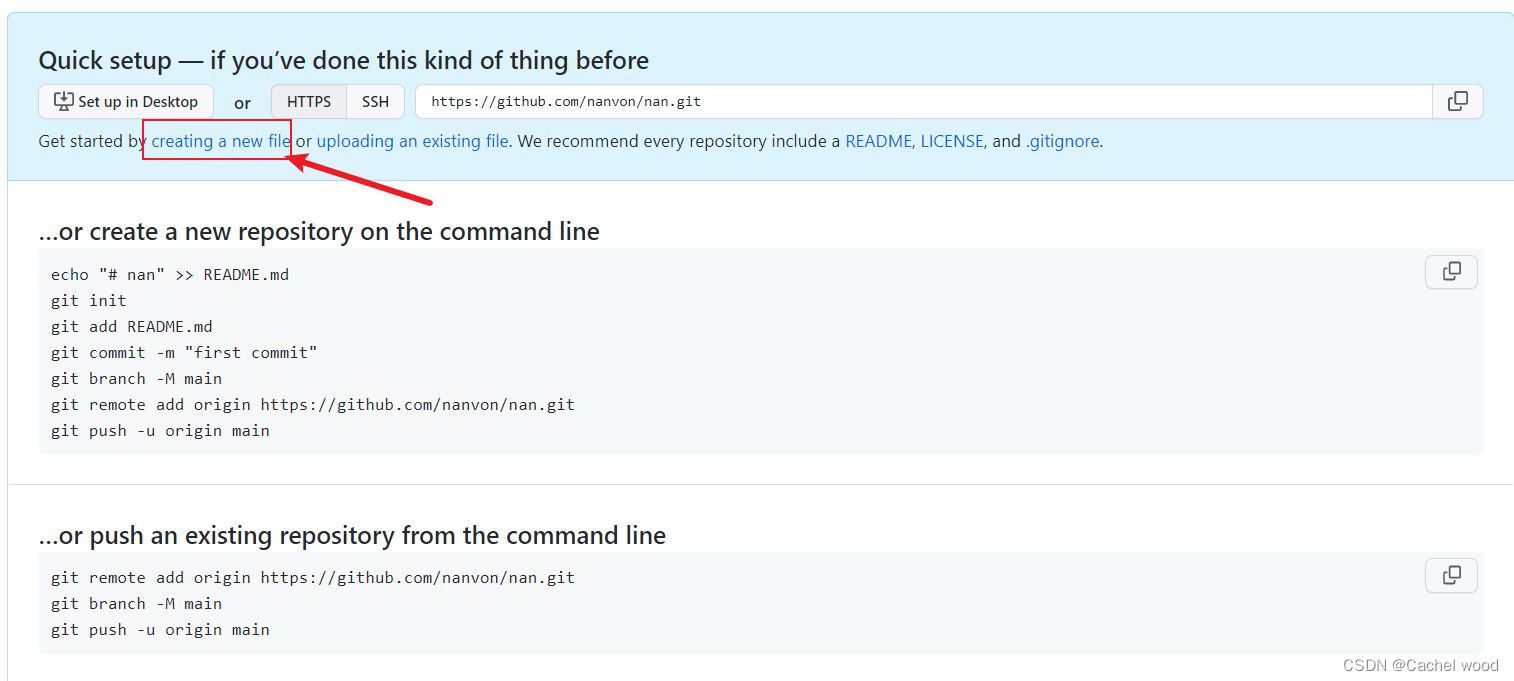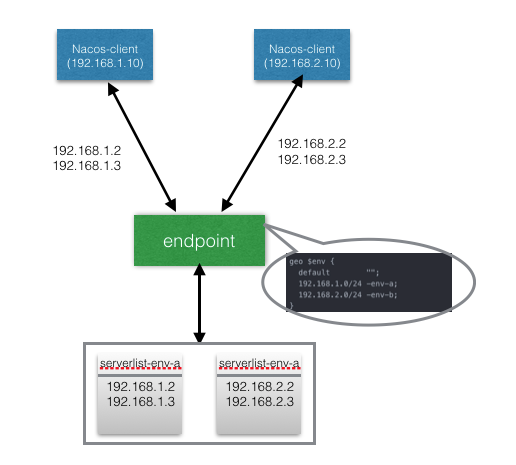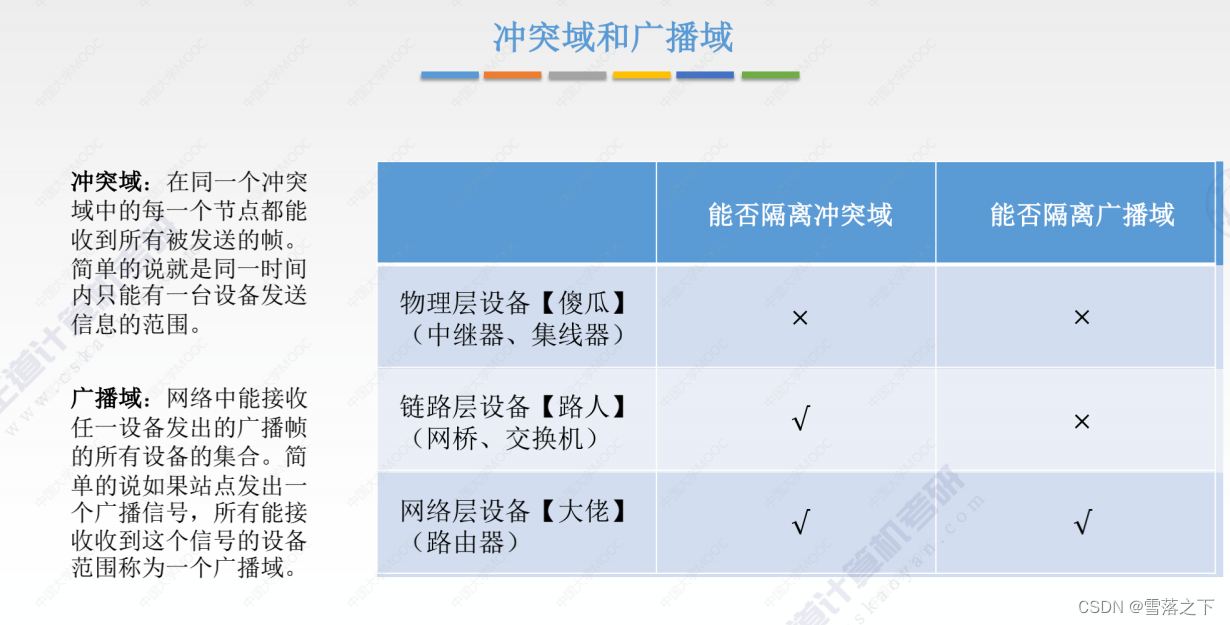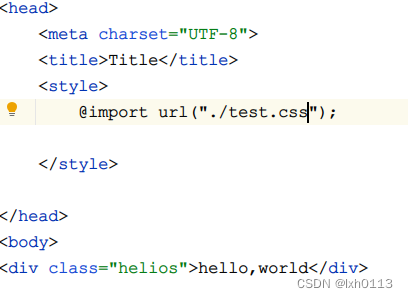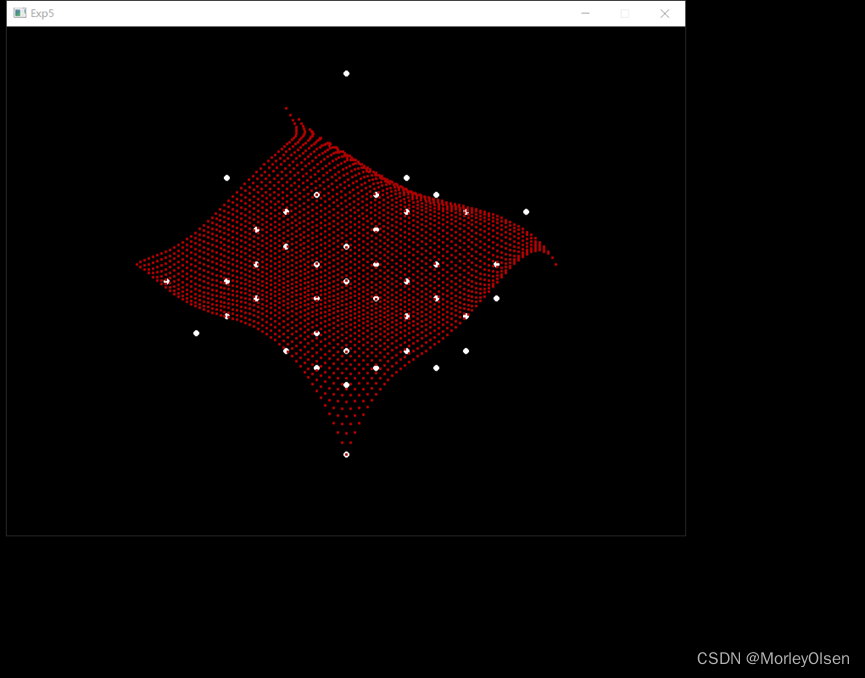Prometheus如何优化远程读写的性能
场景
为了解决prometheus本地存储带来的单点问题,我们一般在高可用监控架构中会使用远程存储,并通过配置prometheus的remote_write和remote_read来对接
远程写优化:remote_write
用户可以在Prometheus配置文件中指定Remote Write (远程写)的URL地址,一旦设置了该配置项,Prometheus将采集到的样本数据通过HTTP的形式发送给适配器 (Adaptor) 。而用户则可以在适配器中对接外部任意的服务。外部服务可以是真正的存储系统,公有云的存储服务,也可以是消息队列等任意形式。

远程写的原理:
每个远程写入目标都会启动一个内存写队列(shards),这个队列从WAL中缓存数据。,通过队列去将指标数据写到有远程存储服务中,数据流如下所示:
|--> queue (shard_1) --> remote endpoint
WAL --|--> queue (shard_...) --> remote endpoint
|--> queue (shard_n) --> remote endpoint
重试机制:
当一个
分片备份并填满队列时,Prometheus将阻止从WAL中读取数据到任何分片。(关于这点就涉及到对以上参数优化,后面参数capacity部分讲解)
远程端点写入失败会进行重试操作,并且保证数据不会丢失,除非远程端点保持关闭状态超过2小时,因为2小时后,WAL将被压缩,尚未发送的数据将丢失。重试时间见下面参数:min_backoff和max_backoff。
内存使用:
使用远程写入会增加Prometheus的内存占用量。大多数用户报告的内存使用量增加了约25%,但这取决于数据的形状。对于WAL中的每个系列,远程写代码都会缓存系列ID到标签值的映射,从而显着增加内存使用率。除了series缓存之外,每个分片及其队列还会增加内存使用量。当进行优化调整时,请考虑减少max_shards增加的数量,同时提高capacity和max_samples_per_send参数的大小从而避免无意间耗尽内存。默认
capacity和max_samples_per_send的取值将使得每每个shard使用内存小于100kb。
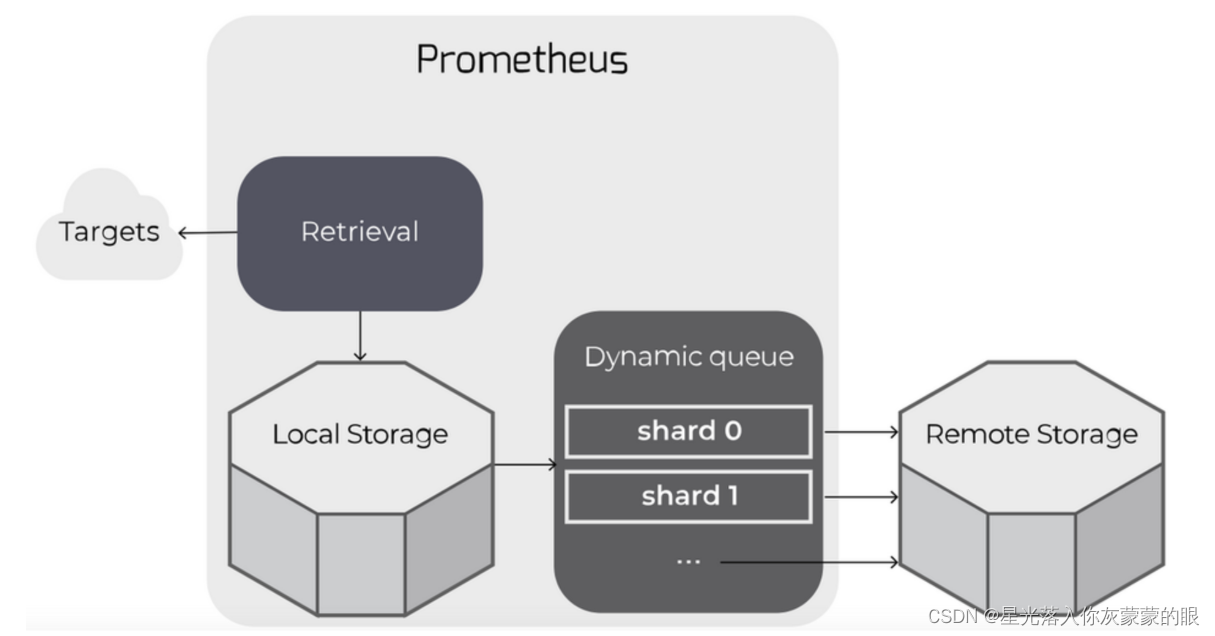
Prometheus配置文件中添加remote_write和remote_read配置,其中url用于指定远程读/写的HTTP服务地址。如果该URL启动了认证则可以通过basic_auth进行安全认证配置。对于https的支持需要设定tls_concig。proxy_url主要用于Prometheus无法直接访问适配器服务的情况下。
remote_write:
url: <string>
[ remote_timeout: <duration> | default = 30s ]
write_relabel_configs:
[ - <relabel_config> ... ]
basic_auth:
[ username: <string> ]
[ password: <string> ]
[ bearer_token: <string> ]
[ bearer_token_file: /path/to/bearer/token/file ]
tls_config:
[ <tls_config> ]
[ proxy_url: <string> ]
remote_read:
url: <string>
required_matchers:
[ <labelname>: <labelvalue> ... ]
[ remote_timeout: <duration> | default = 30s ]
[ read_recent: <boolean> | default = false ]
basic_auth:
[ username: <string> ]
[ password: <string> ]
[ bearer_token: <string> ]
[ bearer_token_file: /path/to/bearer/token/file ]
[ <tls_config> ]
[ proxy_url: <string> ]
remote write queue的可调参数:
# Configures the queue used to write to remote storage.
queue_config:
# Number of samples to buffer per shard before we block reading of more
# samples from the WAL. It is recommended to have enough capacity in each
# shard to buffer several requests to keep throughput up while processing
# occasional slow remote requests.
[ capacity: <int> | default = 2500 ]
# Maximum number of shards, i.e. amount of concurrency.
[ max_shards: <int> | default = 200 ]
# Minimum number of shards, i.e. amount of concurrency.
[ min_shards: <int> | default = 1 ]
# Maximum number of samples per send.
[ max_samples_per_send: <int> | default = 500]
# Maximum time a sample will wait in buffer.
[ batch_send_deadline: <duration> | default = 5s ]
# Initial retry delay. Gets doubled for every retry.
[ min_backoff: <duration> | default = 30ms ]
# Maximum retry delay.
[ max_backoff: <duration> | default = 5s ]
# Retry upon receiving a 429 status code from the remote-write storage.
# This is experimental and might change in the future.
[ retry_on_http_429: <boolean> | default = false ]
max_shards和max_samples_per_send决定了Prometheus写入远程存储的最大TPS
参数解析:
1、capacity
定义:每个内存队列(shard:分片)的容量。
一旦WAL被阻塞,就无法将样本附加到任何分片,并且所有吞吐量都将停止。所以在大多数情况下,单个队列容量应足够打以避免阻塞其他分片,但是太大的容量可能会导致过多的内存消耗,并导致重新分片期间清除队列的时间更长。
2、max_shards
顾名思义,最大的分片数(即队列数),也可以理解为远程写的并行度。peometheus远程写的时候会使用所有的分片,只有在写队列落后于远程写的速度,使用的队列数会达到max_shards,目的在于提高远程写的吞吐量。
PS:在操作过程中,Prometheus将根据传入的采样率,未发送的未处理样本数以及发送每个样本所花费的时间,连续计算要使用的最佳分片数。(实际的分片数是动态调整的)
3、min_shards
最小分片配置Prometheus使用的最小分片数量,并且是远程写入开始时使用的分片数量。如果远程写入落后,Prometheus将自动扩大分片的数量,因此大多数用户不必调整此参数。但是,增加最小分片数将使Prometheus在计算所需分片数时避免在一开始就落后。
4、max_samples_per_send
定义:每次远程写发送的最大指标数量,即批处理;
这个值依赖于远程存储系统,对于一些系统而言,在没有显著增加延迟的情况下发送更多指标数据而运行良好,然而,对于另外一些系统而言,每次请求中发送大量指标数据可能导致其出现故障,使用的默认值是适用于绝大多数系统的。
5、batch_send_deadline
定义:单一分片批量发送指标数据的最大等待时间;
即使排队的分片尚未达到max_samples_per_send,也会发送请求。 对于对延迟不敏感的小批量系统,可以增加批量发送的截止时间,以提高请求效率。
6、min_backoff
定义:远程写失败的最小等待时间;
min_backoff是第一次的重试等待时间,第二次等待时间是其2倍,以此类推,直到max_backoff的值;
7、max_backoff
定义:远程写失败的最大等待时间;
推荐做法:
当进行优化调整时,请考虑减少max_shards的数量,同时提高capacity和max_samples_per_send参数的大小从而避免无意间耗尽内存
max_shards和max_samples_per_send决定了Prometheus写入远程存储的最大TPS,
max_shards * max_samples_per_send决定了TPS的值,所以要考虑这两个的合理搭配
给出阿里云prometheus对接TSDB调优参考表:
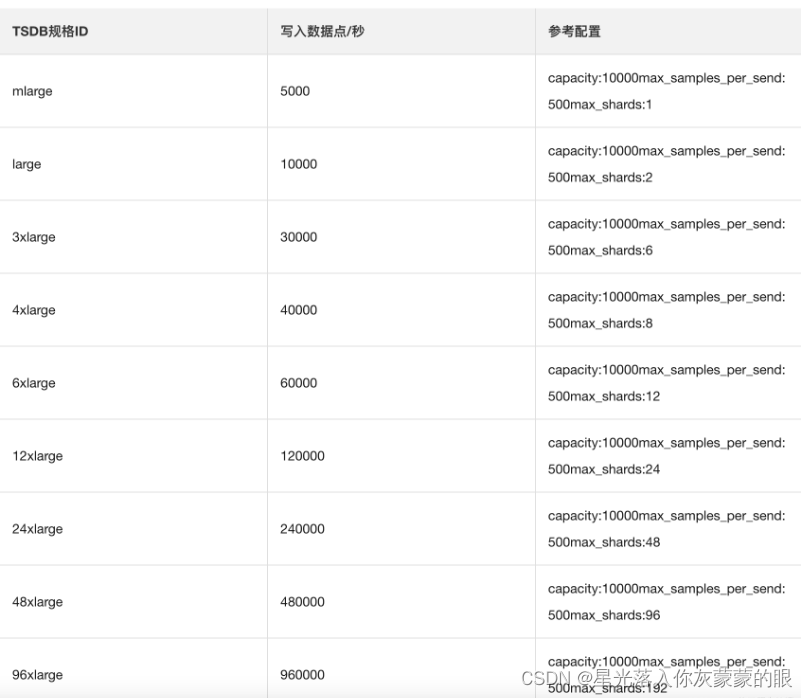
远程读优化:remote_read
如下图所示,Promthues的Remote Read(远程读)也通过了一个适配器实现。在远程读的流程当中,当用户发起查询请求后,Promthues将向remote_read中配置的URL发起查询请求(matchers,ranges),Adaptor根据请求条件从第三方存储服务中获取响应的数据。同时将数据转换为Promthues的原始样本数据返回给Prometheus Server。
当获取到样本数据后,Promthues在本地使用PromQL对样本数据进行二次处理。
注意:启用远程读设置后,只在数据查询时有效,对于规则文件的处理,以及Metadata API的处理都只基于Prometheus本地存储完成。
默认情况下,prometheus除了使用remote_write将数据发送到远程时序数据库,同时还会按照以下参数来保留数据到本地自己的时序数据库,两者取最先达到限制的:
--storage.tsdb.retention.time=30d
--storage.tsdb.retention.size=512MB
也就说默认情况下,prometheus保存了两份数据,一份到远程时序数据库,一份在本地。
那么读取的时候是读取远程的还是读取本地是由 read_recent 参数决定
# Whether reads should be made for queries for time ranges that
# the local storage should have complete data for.
[ read_recent: <boolean> | default = false ]
read_recent作用:
当设置为 true 时,所有查询都将从远程和本地存储中得到答复。
当为 false(默认值)时,任何可以从本地存储完全回答的查询都不会发送到远程端点
推荐做法:
通过storage.tsdb.retention.time与storage.tsdb.retention.size控制缓存短期数据在本地
配置read_recent为false,使得本地能查询到的数据都优先在本地进行查询
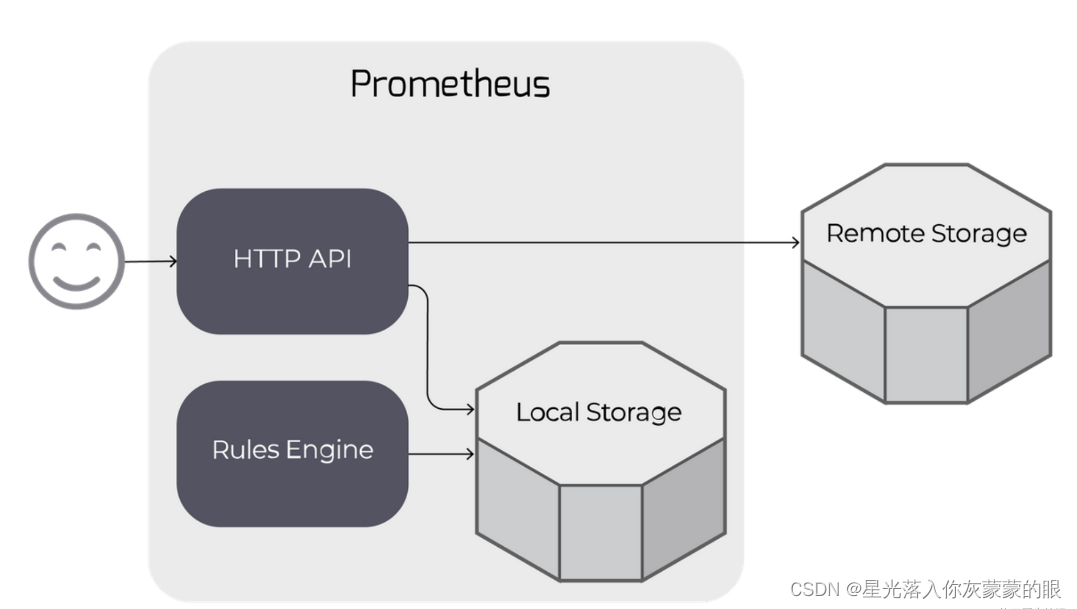
自定义Remote Storage Adaptor
实现自定义Remote Storage需要用户分别创建用于支持remote_read和remote_write的HTTP服务。

当前Prometheus中Remote Storage相关的协议主要通过以下proto文件进行定义:
syntax = "proto3";
package prometheus;
option go_package = "prompb";
import "types.proto";
message WriteRequest {
repeated prometheus.TimeSeries timeseries = 1;
}
message ReadRequest {
repeated Query queries = 1;
}
message ReadResponse {
// In same order as the request's queries.
repeated QueryResult results = 1;
}
message Query {
int64 start_timestamp_ms = 1;
int64 end_timestamp_ms = 2;
repeated prometheus.LabelMatcher matchers = 3;
}
message QueryResult {
// Samples within a time series must be ordered by time.
repeated prometheus.TimeSeries timeseries = 1;
}
以下代码展示了一个简单的remote_write服务,创建用于接收remote_write的HTTP服务,将请求内容转换成WriteRequest后,用户就可以按照自己的需求进行后续的逻辑处理。
package main
import (
"fmt"
"io/ioutil"
"net/http"
"github.com/gogo/protobuf/proto"
"github.com/golang/snappy"
"github.com/prometheus/common/model"
"github.com/prometheus/prometheus/prompb"
)
func main() {
http.HandleFunc("/receive", func(w http.ResponseWriter, r *http.Request) {
compressed, err := ioutil.ReadAll(r.Body)
if err != nil {
http.Error(w, err.Error(), http.StatusInternalServerError)
return
}
reqBuf, err := snappy.Decode(nil, compressed)
if err != nil {
http.Error(w, err.Error(), http.StatusBadRequest)
return
}
var req prompb.WriteRequest
if err := proto.Unmarshal(reqBuf, &req); err != nil {
http.Error(w, err.Error(), http.StatusBadRequest)
return
}
for _, ts := range req.Timeseries {
m := make(model.Metric, len(ts.Labels))
for _, l := range ts.Labels {
m[model.LabelName(l.Name)] = model.LabelValue(l.Value)
}
fmt.Println(m)
for _, s := range ts.Samples {
fmt.Printf(" %f %d\n", s.Value, s.Timestamp)
}
}
})
http.ListenAndServe(":1234", nil)
}
I’m not afraid of anyone, but I’m afraid I’m not strong enough.




